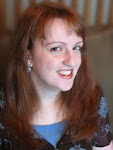
Set in Victorian London with characters real and imagined, The Map of Time boasts a triple-play of intertwined plots in which a skeptical H.G. Wells is called upon to investigate purported incidents of time travel and thereby save the lives of an aristocrat in love with a murdered prostitute from the past; of a woman bent on fleeing the strictures of Victorian society; and of his very own wife, who may have become a pawn in a 4th-dimensional plot to murder the authors of Dracula, The Time Machine and The War of the Worlds, in order to alter their identities and steal their fictional creations. . . . Mingling fictional characters with real ones, Palma weaves a historical fantasy as imaginative as it is exciting, a story full of love and adventure that also pays homage to the roots of science fiction while transporting its readers to a fascinating Victorian London for their own taste of time travel. (Amazon)
Review by Laura Madsen, mom, veterinarian and writer
THE MAP OF TIME is set in Victorian London and follows several interlacing story lines, all of which center on time travel, both real and imagined. Inspired by H.G. Wells’ novel, THE TIME MACHINE, the concept of time travel is the latest rage among fashionable members of British high society.
Cousins Andrew Harrington and Charles Winslow are aristocratic twenty-somethings living in indolent splendor. Andrew falls in love with a poor Whitechapel prostitute who is subsequently murdered by the infamous Jack the Ripper. On the anniversary of her death, Andrew is on the verge of committing suicide when Charles interrupts to propose a visit to the past, by way of Wells’ attic, to stop the Ripper before he can murder Andrew’s mistress.
Elsewhere in London, a firm alleges to have located a time portal to the year 2000, when humans battle steam-powered automatons in a steampunk version of Terminator, and offers guided expeditions to the future. Claire Haggerty hates the life set out for a Victorian young woman of social standing (“she loathed those corsets apparently designed by the devil himself, she longed to be able to use her brain the way any man could, and she was not the slightest bit interested in marrying any of the young men hovering around her”). She daydreams of defecting to the year 2000 to be with the human hero of the war against the robots.
And finally, Inspector Colin Garrett of Scotland Yard investigates a series of murders which can only have been perpetrated by a traveler from the future with advanced weapon technology. Authors H.G. Wells, Bram Stoker and Henry James are among the intended victims.
Sprinkled throughout the novel are interesting discussions about the nature of time (“the elasticity of time, its ability to expand or contract like an accordion regardless of clocks”), parallel universes (“if the grass in next door’s garden was always greener, how much more luxuriantly verdant must it be in the neighboring universe?”) and the paradoxes inherent in discussion of time travel.
The point of view is third-person omniscient with occasional direct comments from the narrator to the reader, as in this passage:
“And so Andrew rode on, seized by a wild impulse, overwhelmed for the first time by a burning, pulsating sensation, which might reasonably be described as happiness. And, prey to the effects of such a violent infatuation, everything in the universe he rode past appeared to sparkle, as though each of its elements—the paths strewn with dead leaves, the rocks, the trees, even the squirrels leaping from branch to branch—were lit up by an inner glow. But have no fear, I shall not become bogged down in lengthy descriptions of acres of impassioned, practically luminous parkland because, not only do I have no taste for it, but it would be untrue, for despite Andrew’s altered vision, the landscape clearly did not undergo any real transformation, not even the squirrels, which are well known as creatures who pursue their own interests.”
The novel was written in Spanish by Félix J. Palma and translated to English by Nick Caistor. The English is occasionally clunky; however I read an ARC (advance reading copy), and presumably the wrinkles will be ironed out for the official printing.
Market: Adult fiction (steampunk/ science fiction/ alternate history)
Language: mild
Sensuality: mild
Violence: moderate
Adult themes: prostitution, murder, fraud, betrayal, theft, coercion
Book formats:





















3 comments:
This book sounds like candy to me!! I read this review and had to go straight to Amazon! Thanks!! :)
Oh, golly yes! I must read this!
This sounds AWESOME!!! I loved the passage you included, Laura--sounds kinda Dickens-y, with the narrator's comments. Fun!
Post a Comment